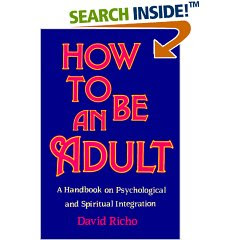>Friends and visitors to our home often comment on the large framed print on the wall in our den. It’s a copy of Rembrandt’s famous oil painting, “The Return of the Prodigal Son.” When they ask what drew me to the painting, I tell them about Henri J. Nouwen’s book, The Return of the Prodigal Son, I read it a few years ago and was enthralled by Nouwen’s story, inspired by this painting. Every year on the Sunday of the Prodigal Son, one of the Sundays leading up to Orthodox Lent, I find myself returning home from church and meditating on this painting again. Nouwen’s book uses each of the subjects in the painting—the prodigal son, the older brother, the onlookers, the father—and parallels them to stages in a person’s spiritual growth. In the end, Nouwen says, we all need to become the father, the grownup whose forgiving arms are always open to others.
It’s a copy of Rembrandt’s famous oil painting, “The Return of the Prodigal Son.” When they ask what drew me to the painting, I tell them about Henri J. Nouwen’s book, The Return of the Prodigal Son, I read it a few years ago and was enthralled by Nouwen’s story, inspired by this painting. Every year on the Sunday of the Prodigal Son, one of the Sundays leading up to Orthodox Lent, I find myself returning home from church and meditating on this painting again. Nouwen’s book uses each of the subjects in the painting—the prodigal son, the older brother, the onlookers, the father—and parallels them to stages in a person’s spiritual growth. In the end, Nouwen says, we all need to become the father, the grownup whose forgiving arms are always open to others.
 Another book from my bookshelf caught my eye last night, How to Be An Adult: A Handbook on Psychological and Spiritual Integration by David Richo. (David Richo is a psyhchologist and teacher in Santa Barbara, California. The book was published in1991 by Paulist Press. ) His chapter, “Growing Pains and Growing Up” is helpful to me as I remember some difficult things about my childhood while writing my memoir. Richo says:
Another book from my bookshelf caught my eye last night, How to Be An Adult: A Handbook on Psychological and Spiritual Integration by David Richo. (David Richo is a psyhchologist and teacher in Santa Barbara, California. The book was published in1991 by Paulist Press. ) His chapter, “Growing Pains and Growing Up” is helpful to me as I remember some difficult things about my childhood while writing my memoir. Richo says:
Our problem is not that as children our needs were unmet, but that as adults they are still unmourned! The hurt, bereft, betrayed child is still inside of us, wanting to cry for what he missed and wanting thereby to let go of the pain and the stressful present neediness she feels in relationships…. It may take many years and just the right circumstances or person to grant us the liberating opening to know and to tell our story in words. When this happens, the memories come back and we hear ourselves putting them into words for the first time. This profound release initiates us into the heavy and healing ways of grief-work…. Griefwork done with consciousness builds self-esteem sine it shows us our courageous faithfulness to the reality of loss. It authenticates us as adults who can say Yes to sadness, anger, and hurt. Such an heroic embrace of our own truth transforms emptiness into capacity.
It’s a bit humbling to still be dealing with childhood stuff at fifty-seven…. like cutting your  wisdom teeth after your own children are grown. But every two months a publication arrives in my mailbox that reminds me that I’m not alone—that an entire generation of baby boomers are also struggling with this growing up stuff. The publication is AARP The Magazine. Three stories in the March-April 2008 issue drew me in. First, probably because I’m focusing on clothes and appearance in my memoir, I loved the article, “Great Looks: 2008 Faces of 50+” and especially the story of Daisy Spears Stroud, 86 here. Mrs. Stroud, a mother, grandmother, and great-grandmother, “proves that wearing trendy clothing… can work at any age.” I also loved the story about Christine Andrews, who at 73 is part of a group that performs at local nursing homes. Click on this video (below) to watch the models talk about how they feel about “acting their age”… they’re all over 50.
wisdom teeth after your own children are grown. But every two months a publication arrives in my mailbox that reminds me that I’m not alone—that an entire generation of baby boomers are also struggling with this growing up stuff. The publication is AARP The Magazine. Three stories in the March-April 2008 issue drew me in. First, probably because I’m focusing on clothes and appearance in my memoir, I loved the article, “Great Looks: 2008 Faces of 50+” and especially the story of Daisy Spears Stroud, 86 here. Mrs. Stroud, a mother, grandmother, and great-grandmother, “proves that wearing trendy clothing… can work at any age.” I also loved the story about Christine Andrews, who at 73 is part of a group that performs at local nursing homes. Click on this video (below) to watch the models talk about how they feel about “acting their age”… they’re all over 50.
Okay, this next one has nothing to do with growing up, but I’m including it here just to share  what looks like a great Lenten recipe – Warm Potato-Tomato Salad with Dijon Vinaigrette is here.
what looks like a great Lenten recipe – Warm Potato-Tomato Salad with Dijon Vinaigrette is here.
I was especially drawn in to Pulitzer Prize-winning journalist Les Payne’s story, because he was
 a 25-year-old U.S. Army captain in Vietnam, and I have a son serving his second tour of duty in Iraq right now and another son serving in the Air Force in Cheyenne, Wyoming. Payne writes about his 40-year journey in search of spiritual peace, from his childhood home in Tuscaloosa, Alabama, where his grandmother “taught him the Ten Commandments and instilled in him a belief in the infallibility of Jesus Christ”… to his exploration of Zen Buddhism, Unitarianism, and Islam, and agnosticism. He finally settled in New York City’s Abyssinian Baptist Church, saying, “Finally, I had achieved a spiritual mooring. I was home again.”
a 25-year-old U.S. Army captain in Vietnam, and I have a son serving his second tour of duty in Iraq right now and another son serving in the Air Force in Cheyenne, Wyoming. Payne writes about his 40-year journey in search of spiritual peace, from his childhood home in Tuscaloosa, Alabama, where his grandmother “taught him the Ten Commandments and instilled in him a belief in the infallibility of Jesus Christ”… to his exploration of Zen Buddhism, Unitarianism, and Islam, and agnosticism. He finally settled in New York City’s Abyssinian Baptist Church, saying, “Finally, I had achieved a spiritual mooring. I was home again.” I know I’m jumping around this morning… trying to finish my blog post before my friend Kerry arrives to continue our work preparing for the icon workshop this coming Thursday through Sunday at St. John… but I’ll end on a lighter note. I think I’ve shared before that I send an essay to the New York Times Magazine’s “Lives” column ever couple of months. A long shot, but good practice writing short essays. Usually the bio for the author includes some published works, or at least some indication of professional achievement or maturity that shows why their essay was chosen. I always read these, and usually feel better about the dozens of essays of my own that The Times has rejected. Until yesterday.
I know I’m jumping around this morning… trying to finish my blog post before my friend Kerry arrives to continue our work preparing for the icon workshop this coming Thursday through Sunday at St. John… but I’ll end on a lighter note. I think I’ve shared before that I send an essay to the New York Times Magazine’s “Lives” column ever couple of months. A long shot, but good practice writing short essays. Usually the bio for the author includes some published works, or at least some indication of professional achievement or maturity that shows why their essay was chosen. I always read these, and usually feel better about the dozens of essays of my own that The Times has rejected. Until yesterday.
“Two Discoveries” in the New York Times Magazine’s “Lives” column… was written by a junior in high school! She’s writing about her grandmother’s gloves. The author, Celia Dovell Bell, was seven when her grandmother died, and now she’s a big, grown-up seventeen-year-old. But her reflections on her grandmother are really precious. My favorite part:
When I was a girl, the glove box was a treasure chest, and its contents were a portal to a time I never knew; if I slipped on those gloves, I was elsewhere, dressed in my finest, and the posters on the wall in my room and the dolls strewn across the floor were years and miles away. My hands became her hands.
That’s how I feel when I look at pictures of Mamaw and me. Especially this one, with the quilt she made for me as a wedding gift in 1970. (Forgive me if I posted this picture recently.) All the squares are made from scraps of dresses she sewed for me… over a period of nineteen years.
I guess we all grow up on different time-scales. Celia Bell seems to be on her way, at seventeen. I’m just thankful that I can swallow my pride, learn from her, and yes, I’ll keep sending essays to the New York Times Magazine. Just for practice.